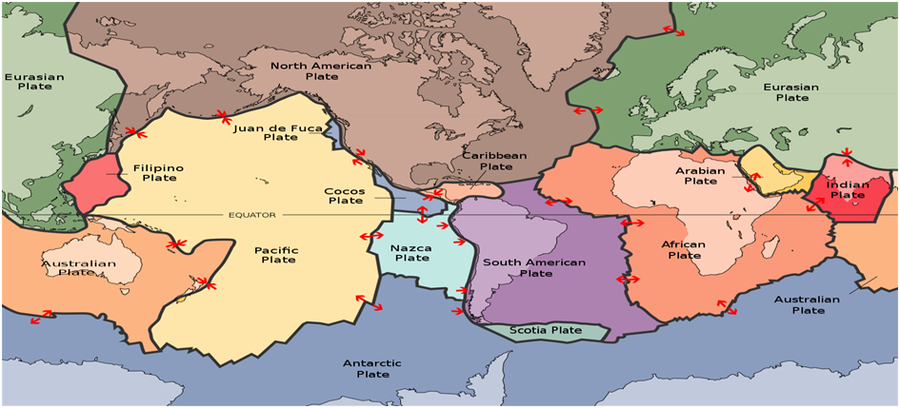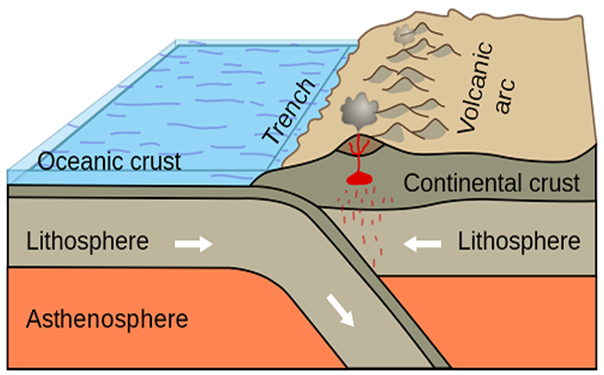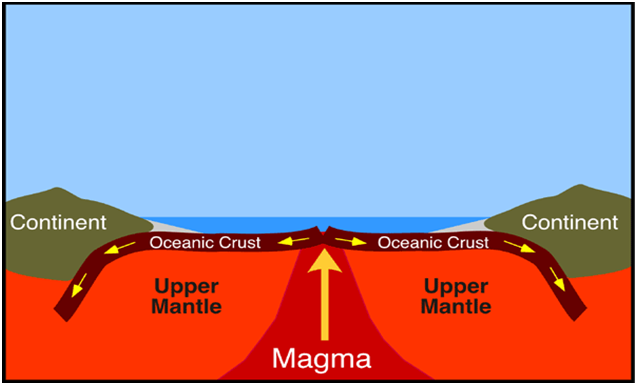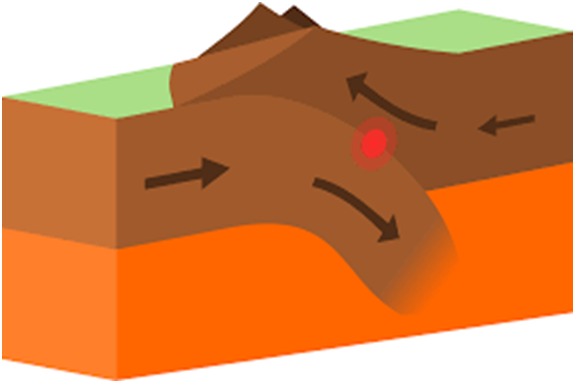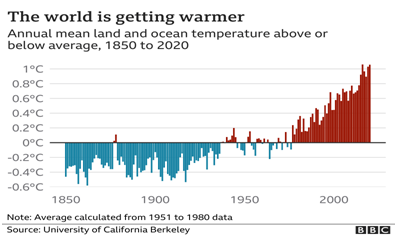Jan. 31, 2022
Mains Daily Question
Jan. 31, 2022
Elucidate the role of Sardar Patel in integration of princely states in India.
Princely States were several large and small states in British India ruled by princes with some form of control over their internal affairs as long as they accepted British supremacy. They (565 in number) covered one-third of the land area of the British Indian Empire and one out of four Indians lived under princely rule. Just before Independence, the British gave right to join either India or Pakistan or remain independent to the people of princely states.
Sardar Vallabhbhai Patel, the Home Minister in the interim government, was responsible for unifying these to create a united country I.e. India. He played a crucial role in integrating the princely states in India. It can be seen as following:
- JawaharLal Nehru asked him to integrate the princely states and with the help of VP Menon, Patel drafted an instrument of accession to be signed by the rulers. By signing the instrument, the princely states agreed to hand over control of defence, foreign affairs, and communications to the Union government.
- Patel also introduced the idea of ‘privy purses,’ making payments to the royal families in lieu of their joining India. Most of the states joined the India, however, some states like Travancore and Bhopal were still hesitant to join India and the Constituent Assembly.
- Patel took following actions to integrate these princely states:
- Hyderabad: When the Nizam of Hyderabad was contemplating either remaining independent or joining Pakistan, Patel sent a contingent of troops into the state to support the freedom struggle going on in the state against the Nizam. Within four days, India had control of Hyderabad.
- Jodhpur: The Prince of Jodhpur wanted to join Pakistan. When Patel got wind of the situation, he immediately contacted him, offering several benefits to get the Prince to accede to India.
- Junagadh: The Nawab of Junagadh had accepted Pakistan's offer. As the locals revolted against the Nawab, he fled to Karachi. Patel then requested Pakistan to allow organizing a plebiscite in Junagadh. He later sent troops to force the annexation of its three principalities. The Dewan of Junagadh was forced to accede to India. A plebiscite was held, where 91 percent of the population voted to remain in India.
- Kashmir: The Maharaja of Kashmir, Hari Singh, was reluctant to join either India or Pakistan. When armed tribesmen from Pakistan entered Kashmir, the Maharaja appealed to India for help. Patel and Nehru agreed to send in help if Singh signed the instrument of accession. Thus, Kashmir was included in the Union of India.
- Manipur: It became a constitutional monarchy in 1948. In the Legislative Assembly of Manipur there were sharp differences over the question of merger of Manipur with India. The Maharaja Bodhchandra was pressured by the government of India to sign the instrument of accession.
Through his statesmanship, negotiations with princely states through diplomacy and real politic, Sardar Patel managed to bring nearly all of the princely states under the India Union.
Jan. 27, 2022
Mains Daily Question
Jan. 27, 2022
What are the salient features of Indian Society?
Indian society is a pluralistic society with a complex social order characterized by a multitude of ethnic, linguistic, religious, and caste divisions. It comprises people living in rural, urban, tribal setting and all sections which carry the ethos of Indianness.
Salient features:
- Multi-Ethnic Society: India is home to almost all racial profiles like Nordic, Dinaric, Proto-Australoid, Mongolian, etc.
- Multi-Lingual Society: Language is a dominant source of identity so much so that the present form of India into states represents the linguistic map of India.More than 1600 languages are spoken in India.
- Multi-Class Society.
- Patriarchal Society: Patriarchy is a social system in which men hold primary power and enjoy greater status than women. Indian society is largely a patriarchal society. However, some tribal societies are matrilineal societies where women have the dominant decision-making power.
- Unity in Diversity: India as a nation is a classic example of it as despite having multiple geographical, religious, linguistic, cultural, and racial diversity, India has always stood up as an integrated nation.
- Family and Kinship System: Blood relations and kinship ties enjoy a stronghold over other social relationships.
- Tribes: There are about 705 Scheduled tribes in the country and they constitute 6 per cent of the population of the country, according to the 2011 census.
- Caste system: Caste system is a social institution which is based on the principle of pollution and purity. It means that social stratification is largely based on caste. Membership to a caste group is acquired by birth, based on which people are ranked relative to other caste groups. It is one of the oldest forms of repressive system which is still prevalent in India.
- Balance between spiritualism and materialism.
- Balance between Individualism and collectivism.
- Co-existence of traditionalism and modernity.
Indian society is the result of a long journey from the time of Indus civilization to today’s globalized world. In this journey it has gone many transformations under the influence of outside world and reform movements within the society. However, what is unique and appreciable is the fact that it has managed to adopt and accept various features while preserving its past.
Jan. 24, 2022
Mains Daily Question
Jan. 24, 2022
What do you understand by the term “Tectonic Plates”? Discuss the different plate boundaries interactions with relevant examples.
Tectonic plates are pieces of Earth's crust and uppermost mantle, together referred to as the lithosphere. The plates consist of two principal types of material: oceanic crust (sima) and continental crust (sial).
These plates lie on top of a partially molten layer of rock called the asthenosphere. Due to the convection of the asthenosphere and lithosphere, the plates move relative to each other.
Plate Boundaries:
There are three types of plate boundaries on the basis of direction of movement of plates.
- Divergent Boundary:
In this, the plates move away from each other leading to sea floor spreading and coming out of magma. Here, new crust is formed and hence it is also called constructive boundary.
Example: Mid oceanic ridge in Atlantic Ocean.
- Convergent Boundary:
In this, two plates collide against each other leading to destruction of Earth’s crust. The collision may be between continental plate or oceanic plates or both.When two continental plates collide, it forms towering mountain ranges like Himalaya.
In case of oceanic- continental collision, there is subduction of lighter oceanic plate leading to formation of chain of volcanoes.
- Transform Boundary:
At such boundary, two plates slip pass each other horizontally. Such interaction result in earthquake in the region. For Example, San Andreas Fault, which is responsible for many of California’s earthquakes.
Plate boundaries are important because they are often associated with earthquakes and volcanoes. The activity along the plate margins helps us understand and predict the nature and timing of events like earthquake, volcano and tsunami.
Jan. 20, 2022
Mains Daily Question
Jan. 20, 2022
The COVID-19 pandemic has raised questions about WHO’s authority to challenge states during serious outbreaks. In light of this statement, critically discuss the role of WHO as a global health leader.
WHO is a specialized agency of UN responsible for international public health. The objective of the Organization is to ensure the attainment by all peoples of the highest possible level of health.
However, the COVID-19 pandemic and the controversies associated with it have raised questions about the credibility of WHO as a global health leader.
WHO: failed to exercise global health leadership
- Failed to Challenge sovereignty
- The International Health Regulations (IHR), adopted by WHO member states in 2005, authorizes WHO to collect disease related information for other sources, seek verification from governments about such information.
- WHO failed to act on information it had from other sources. It also failed to share that information with other countries.
Became a tool of Chinese politics
- WHO director praised China for the speed with which it detected the outbreak and lauded China for its transparency.
Confused and delayed initial response
- Initially, the organization opposed travel ban and maintained that masks to be used by only those with symptoms.
- In the mid-January 2020, it reiterated its stand that human-to-human transmission had not been proved.
Failed to ensure a human-rights approach to health
- WHO is the leading guardian in ensuring human-rights approach to health.
- Questions were raised about WHO’s silence in the face of the human rights consequences of harsh government responses, such as mandatory quarantine and isolation measures.
WHO: Successfully handled the pandemic
- WHO deployed scientific skills, epidemiological expertise, medical know-how, outbreak-response capacities in the fight against COVID-19.
- The organization’s sharing of information and its attempts to counter online misinformation and disinformation have earned widespread praise.
- The medical and public health expertise that WHO offered to countries to combat COVID-19 is appreciated.
- It gathered information, collaborated with laboratories and was successful in devising standard tests and protocols for managing the disease.
- It raised approximately $175 million to find a cure.
- It created a COVAX facility which ensured a collaborative approach towards vaccine development and its equitable distribution.
Conclusion:
- WHO is providing its leadership in global health more through its scientific, medical, and public health capabilities than its authority to challenge states politically under the IHR.
- However, the pandemic offers an opportunity to reform the WHO by providing it more financial resources as well as greater autonomy.
Jan. 17, 2022
Mains Daily Question
Jan. 17, 2022
mRNA vaccine technology is in news across the world. What is mRNA vaccine and how it is different from traditional vaccine technology.
Vaccines help prepare the body to fight foreign invaders (pathogens such as bacteria or viruses), to prevent infection.
mRNA or messenger RNA is a new type of vaccine that uses a molecule called messenger RNA. Messenger RNA is a type of RNA that is necessary for protein production.mRNA vaccines work by introducing a piece of mRNA that corresponds to a viral protein, usually a small piece of a protein found on the virus’s outer membrane. Using this mRNA blueprint, cells produce the viral protein. As part of a normal immune response, the immune system recognizes that the protein is foreign and produces specialized proteins called antibodies. Once produced, antibodies remain in the body, even after the body has rid itself of the pathogen, so that the immune system can quickly respond if exposed again.
How it is different from traditional vaccine:
- In traditional vaccine, microbial protein or inactive microbe is placed in a modified version of a different virus (viral vector).Whereas in a mRNA vaccine a molecule called messenger RNA is used rather than part of an actual bacteria or virus.
- Production: Traditional vaccine production is slower and it is more difficult to produce right type of protein. Whereas mRNA vaccine production is faster because it is easier to produce mRNA molecule.
Researchers have been studying and working with mRNA vaccines for decades. Recently Pfizer-BioNTech and the Moderna are using this technology to develop Covid-19 vaccine. Beyond vaccines, cancer research has used mRNA to trigger the immune system to target specific cancer cells. Thus, this technology has the capacity to bring in revolution in fighting health crisis in future.
Jan. 13, 2022
Mains Daily Question
Jan. 13, 2022
What do you understand by global warming? List out major reasons for increasing Earth's temperature in the post-industrial revolution period.
Global warming is the long-term heating of Earth's atmosphere graduallydue to the accumulation of greenhouse gases that disturb the Earth's heat budget. It has been increasing steadily since the industrial revolution according to 'Nature'.The reasons behind this are human activities that include fossil-fuel burning and agriculture primarily. The world is now about 1.2C warmer than it was in the 19th Century - and the amount of CO2 in the atmosphere has risen by 50%.
Global warming did not develop at the same time across the planet. The tropical oceans and the Arctic were the first regions to begin warming in the 1830s. Europe, North America and Asia followed roughly two decades later and so on the Southern hemisphere.
Reasons behind increasing the Earth's temperature in the post-industrial revolution period:
- Anthropological Reasons
- Burning fossil fuels: Fossil fuels are burnt to generate electricity and power vehicles. It led to the release of CO2, SOx and other GHGs. Burning fossil fuels generates greenhouse gas emissions that act like a blanket wrapped around the Earth, trapping the sun's heat and raising temperatures.
- Deforestation & Tree-Clearing: Deforestation to expand farmland and industrial usage disturbed the climate regulation by trees and plants. According to WWF, up to one-fifth of global greenhouse gas pollution comes from deforestation and forest degradation.
- Agriculture & Farming: Animals and livestock produce methane, a greenhouse gas. Some that farmers use also release nitrous oxide, which is another greenhouse gas.
- Increasing population: Ever-increasing human population led to deforestation, emission of CO2 through breathing, emission of CFCs through air conditioners and refrigerators. It caused the temperature to rise.
- Apart from the above-mentioned human-induced reasons, there are some natural reasons like volcanoes, water vapour, forest fires and melting of permafrost that regularly cause emission of various GHS in the atmosphere to increase the global temperature.
According to the latest IPCC report, global warming will reduce Arctic permafrost, emitting methane and CO2 only to cause more temperature increases. Global warming causes rising sea levels and irregular seasons affecting human lives. Therefore, there is an urgent need to control it.
Jan. 10, 2022
Mains Daily Question
Jan. 10, 2022
What do you understand by model code of conduct? Explain the purpose behind having a model code of conduct in India.
The Model Code of Conduct (MCC) is a set of guidelines issued by the Election Commission to regulate conduct of political parties and candidates during the election campaign. It is evolved by the Election Commission on the basis of consensus among political parties.
The model code of conduct is operational from the date on which election schedule is announced until the date of results.
Purpose behind MCC
- Maintain election campaign on healthy lines.
E.g Activities such as using caste and communal feelings to secure votes are not well permitted.
- Avoid clashes and conflicts between political parties or their supporters.
- Ensure peace and order during the campaign period and thereafter, until the results are declared.
- Prescribe guidelines for the ruling party to ensure that a level playing field is maintained.
E.g Ensuring ruling party does not use its official position for election campaign.
E.g. Advertising at the cost of public exchequer or using official mass media for publicity.
- No announcements of financial grants or projects to secure votes during election campaign.
Thus MCC tries to maintain level playing field and elections on policy issues than overtly political issues. Although it does not have a legal backing, it has acquired strength in the recent past because of its strict enforcement by the Election Commission.
Jan. 6, 2022
Mains Daily Question
Jan. 6, 2022
Highlighting the role played by agriculture in India, sketch the scenario of investment in the Indian agricultural sector in the recent years.
Answer: Agriculture plays a vital role in the Indian economy. Over 70 per cent of the rural households depend on agriculture. Agriculture is an important sector of Indian economy as it contributes about 17% to the total GDP and provides employment to over 60% of the population.
Role of agriculture in Indian economy:
- Share in National Income
- Largest Employment Providing Sector
- Contribution to Capital formation
- Providing Raw Material to industries
- Market for Industrial Products
Investments: According to the Department for Promotion of Industry and Internal Trade, the Indian food processing industry has cumulatively attracted Foreign Direct Investment equity inflow of about US$ 10.24 billion between April 2000 and December 2020.Some major investments and developments in agriculture are as follows:
- From 2017 to 2020, India received ~US$ 1 billion in agritech funding. With significant interest from the investors, India ranks third in terms of agritech funding and number of agritech start-ups. By 2025, Indian agritech companies are likely to witness investments worth US$ 30-35 billion.
- In March 2020, Fact, the oldest large‑scale fertiliser manufacturer in the country, crossed one million production and sales mark.
- Nestle India will invest Rs. 700 crore (US$ 100.16 million) in construction of its ninth factory in Gujarat.
- In November 2019, Haldiram entered into an agreement for Amazon's global selling program to E-tail its delicacies in the United States.
- In November 2019, Coca-Cola launched ‘Rani Float’ fruit juices to step out of its trademark fizzy drinks.
- Two diagnostic kits developed by Indian Council of Agricultural Research (ICAR) - Indian Veterinary Research Institute (IVRI) and the Japanese Encephalitis lgM ELISA were launched in October 2019.
- Investment worth Rs. 8,500 crore (US$ 1.19 billion) have been announced in India for ethanol production.
India is expected to achieve the ambitious goal of doubling farm income by 2022 with increased investment in agricultural infrastructure such as irrigation facilities, warehousing and cold storage. Going forward, the adoption of food safety and quality assurance mechanisms such as Total Quality Management (TQM) including ISO 9000, ISO 22000, Hazard Analysis and Critical Control Points (HACCP), Good Manufacturing Practices (GMP) and Good Hygienic Practices (GHP) by the food processing industry will offer several benefits. The agri export from India is likely to reach the target of US$ 60 billion by the year 2022.
Jan. 3, 2022
Mains Daily Question
Jan. 3, 2022
Discuss the socio-religious impact of British conquest of India. How it was different from previous invasions?
Answer:
Since the Battle of Plassey in 1757, British established themselves as a ruling class in India. British conquest had a profound impact on Indian society which occasioned numerous socio-religious reforms among various communities and regions.
Socio-religious impact of British conquest:-
- British introduced modern Western ideas like rationalism, humanism , scientific enquiry etc.
- Indian society was steeped in orthodoxy, traditionalism and practiced various barbaric practices like Sati.
- Indians imbibed the modern ideas and thus began a quest to change the decadent practices and reform the socio-religious practices.
- The British regarded themselves as racially superior because of advanced modern ideas in the socio-religious sphere. Indian reformers urged for various reforms to efface the blot of backwardness.
- Women’s status improved a lot due to impact of modern idea of gender equality in the sphere of education, marriage etc.
- Education took the front seat with coming of the British which had direct impact on the socio- religious sphere of Indians.
How it was different from previous invasions:-
Earlier invaders were absorbed into the superior Indian culture and adopted Indian cultural and religious practices. However, the British were in the vanguard on modernity whereas the Indian society was steeped in medievalism. So the British impacted the social and cultural practices of India, rather than vice versa.
British presence and introduction of modern ideas occasioned many socio-religious reforms. These reforms paved the way for reorganization of society on the basis of equality, rationalism, humanism etc.

